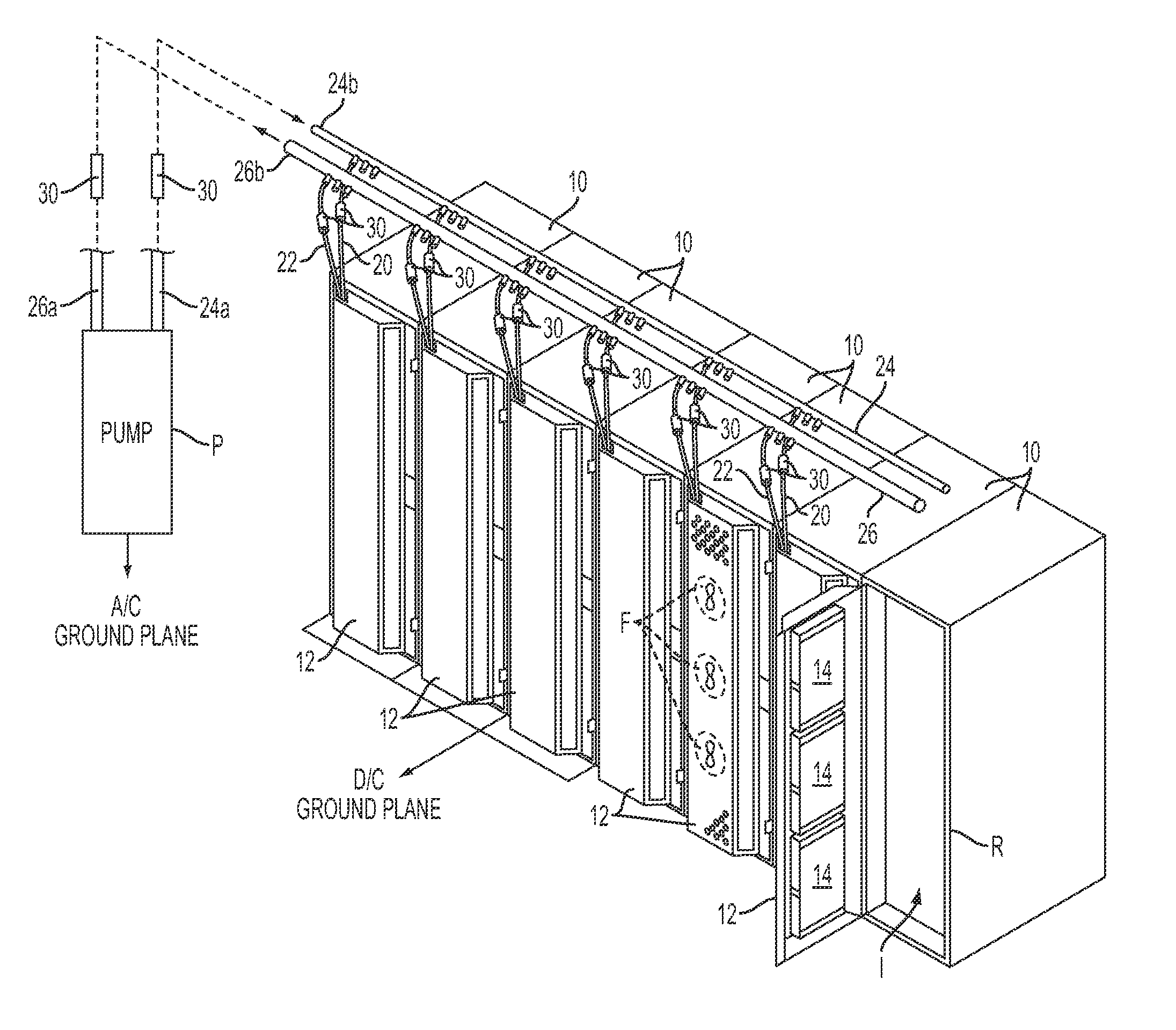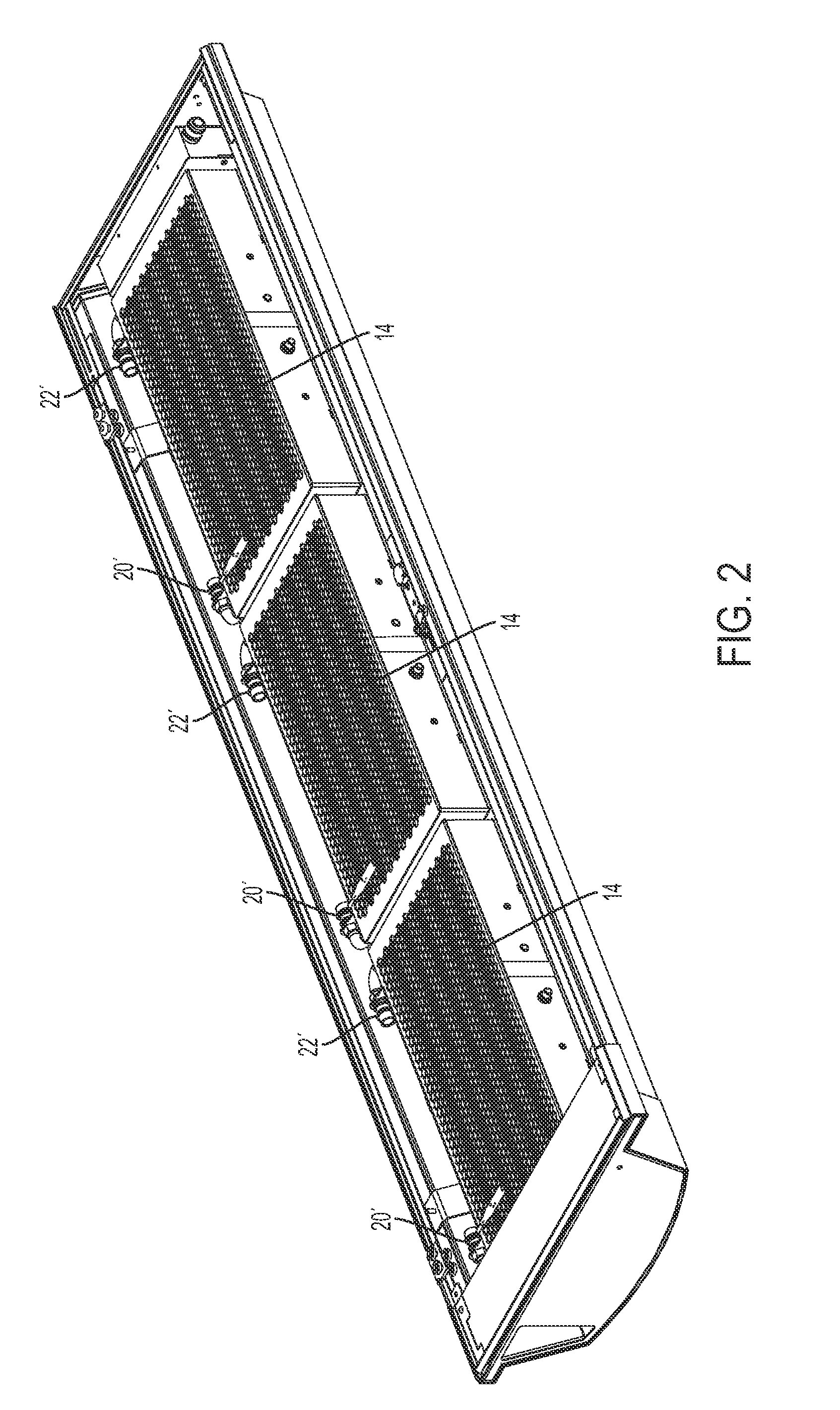Refrigerant line electrical ground isolation device for data center cooling applications
a technology for data center cooling and electrical ground isolation, applied in the direction of electrical apparatus construction details, threaded fasteners, bolts, etc., can solve the problems of nonconductive lines being susceptible to refrigerant permeation, generating an enormous amount of heat, and preventing or inhibiting leakage (permeation). , to achieve the effect of minimizing charge buildup and preventing or inhibiting leakag
- Summary
- Abstract
- Description
- Claims
- Application Information
AI Technical Summary
Benefits of technology
Problems solved by technology
Method used
Image
Examples
example 1
[0035]In normal operation, the insulating properties of the plastic or non-conducting material used to manufacture the isolator impede the bound charge on the inner wall from being conducted to ground at external locations along the isolator. Typically, the volume resistivity of the plastic materials used is on the order of 1011 ohm·m and higher, depending upon the material. The relative dielectric constant ∈I of the plastic is in the range of approximately 2.5 to 4.5, depending upon the material. For HDPE, for example, ∈I is 2.3. The electrical breakdown voltage (i.e. the dielectric strength) of the plastic material is in the range of 300-500 kV / inch, depending on the material. For HDPE, the dielectric strength is in the range 450-500 kV / inch.
[0036]If the isolator cylinder is assumed to have a uniform electrostatic charge per unit length σI on its inner surface the surrounding electric field EI in the radial region, with the radius r in the range of ri≦r≦ro=ri+tI, can be expressed ...
PUM
| Property | Measurement | Unit |
|---|---|---|
| volume resistivity | aaaaa | aaaaa |
| volume resistivity | aaaaa | aaaaa |
| relative dielectric constant ∈I | aaaaa | aaaaa |
Abstract
Description
Claims
Application Information
 Login to View More
Login to View More - R&D
- Intellectual Property
- Life Sciences
- Materials
- Tech Scout
- Unparalleled Data Quality
- Higher Quality Content
- 60% Fewer Hallucinations
Browse by: Latest US Patents, China's latest patents, Technical Efficacy Thesaurus, Application Domain, Technology Topic, Popular Technical Reports.
© 2025 PatSnap. All rights reserved.Legal|Privacy policy|Modern Slavery Act Transparency Statement|Sitemap|About US| Contact US: help@patsnap.com



